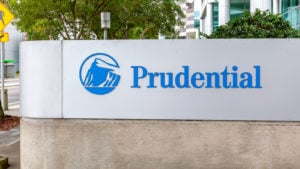Investors often seek out income stocks to hold forever, counting on the income to make up for a rocky market.
The stock market’s steep drop incited panic, pressuring wary investors to sell the good companies along with the bad. Patient investors should take advantage of the market’s panic selling by scooping up income stocks at a discount. These companies’ ability to grow or sustain their market share in tough times is especially compelling.
Perceptive investors should look beyond the basic financial valuation metrics. Price-to-earnings and price-to-sales are ratios that readers may easily obtain for free. Sites like Yahoo Finance offer that data easily.
All seven stocks are in the bargain bin after falling by up to 10% recently. Best Buy and Masco fell the most in 2022. They both trade with a margin of safety of at least 10%.
| BMO | Bank of Montreal | $96.20 |
| BBY | Best Buy | $70.51 |
| MAS | Masco | $47.62 |
| RY | Royal Bank of Canada | $95.59 |
| PRU | Prudential Financial | $91.44 |
| VZ | Verizon Communications | $49.03 |
| VICI | VICI Properties | $28.81 |
Bank of Montreal (BMO)

Bank of Montreal (NYSE:BMO) posted impressive second-quarter results on May 24. The firm posted earnings per share of CAD 3.23. revenue grew by an impressive 59.1% year over year to CAD 10.12 billion. In its panic, markets forgot about BMO’s results, sending BMO stock lower.
Investors should expect the bank to sustain its return on equity of 34.5%. Common Equity Tier 1 ratio topped 16%, up from 13%. It has plenty of capital to absorb any unexpected headwinds.
During the quarter, the firm issued shares and adjusted its fair value of the Bank of the West acquisition. In addition, the bank generated strong internal capital generation.
Margins will expand from property and casualty. Customer deposit is growing but slowing down. As interest rates rise, deposit outflow from its U.S. business is expected.
Chief Executive Officer Tayfun Tuzun expects the company to benefit from the central bank’s aggressive interest rate hike. For example, it expects to see loan expansion into 2023. Net interest income will grow again. This grew by 9% year over year and remains strong.
Best Buy Co (BBY)

Best Buy (NYSE:BBY) failed to hold the $100 level in March and since has trended lower.
In the first quarter, the technology retailer posted a non-GAAP EPS of $1.57. Revenue fell by 8.5% year over year to $10.65 billion. The company expects revenue of up to $49.9 billion in the fiscal year 2023, close to its prior guidance.
Best Buy scared investors when it said comparable sales will fall by between 3.0% to 6.0%.
For more than a decade, the media has predicted the demise of Best Buy. The fear-mongering failed to recognize Best Buy’s strong branding. E-commerce giants cannot dethrone Best Buy because customers prefer their physical stores.
Best Buy’s fiscal year 2025 goals include expanding its products in health. It will pivot further to appliances. This strategy contributed to its sustainable growth every quarter for 10 years. Homeowners need such big-ticket items regardless of market conditions, which makes BBY among the best income stocks to grab on this downturn.
Masco (MAS)

Masco (NYSE:MAS), is a distributor and manufacturer of branded home improvement and building products. The company announced a 500 million accelerated stock buyback on May 10. This makes it one of the more intriguing income stocks to buy because it should set a support level on shares.
In the first quarter, Masco posted net sales increasing by 12% to $2.2 billion. The gross margin fell 350 basis points to 32%. Operating profit fell by 3% to $353 million. The strong results despite a weak home market suggest this is a stock to hold for the long term.
Customers recognize Masco’s pro-business branding. The company’s Behr team and research and development staff executed good results in the quarter. For example, staff worked through supply chain disruptions.
Masco is developing programs to drive growth. It did not offer details but said it gives the company confidence in its guidance. In 2022, Masco will post EPS in the range of $4.12 – $4.32. This is up from the previously announced expectation of $4.10 – $4.30 a share.
Prudential Financial (PRU)

Prudential Financial (NYSE:PRU) has a strong record in the retail, real estate, and public fixed income markets.
For example, it saw a positive $300 million inflow in the institutional unit. Between 2017 and 2021, it attracted $55 billion in inflow.
The central bank’s aggressive rate hike is good for Prudential’s fixed-income business. To maximize profit margins, the firm will adjust its product mix and execute the right strategy.
Prudential’s management team is confident that the higher fee rate business will continue doing well. It will benefit from the very strong market for real estate and private credit.
In the first quarter, Prudential raised $1 billion of hybrid debt. It will benefit from the rate hike, as the rate spreads widen. Furthermore, the firm may pay back the upcoming debt with the cash recently raised. When it matures, it has the $1 billion available to meet those obligations.
The weaker capital markets could create an opportunity for Prudential to acquire inexpensive firms. For now, it will focus on returning capital to shareholders and paying its dividend, which makes it among the income stocks worth a look.
Royal Bank of Canada (RY)

Royal Bank of Canada (NYSE:RY) posted strong second-quarter results, earning CAD 2.96 a share.
Revenue fell by 3.4% year over year to CAD 11.22 billion. Its Common Equity Tier 1 (CET1) ratio of 13.2% enables the bank to support client-driven organic growth.
Investors may count on RBC to return capital to shareholders. For example, it returned $3.6 billion to shareholders through dividends and a stock buyback in Q2.
Canada’s GDP could fall to 2% in 2023. RBC will create value by investing its excess capital.
Its acquisition of Brewin Dolphin, a UK provider of discretionary wealth management, will fuel growth. The acquisition also diversifies RBC’s geographical business. As it creates value for clients with complex needs, the bank may attract more high-net-worth clients.
On Wall Street, seven analysts rate RY stock a buy with a ~ $114.50 price target (per Tipranks).
Verizon Communications (VZ)

Verizon Communications (NYSE:VZ) fell unexpectedly to $46.55 on April 29 before snapping back. The telecom giant’s recent drop created an opportunity for bargain-hunting investors.
Investors seeking income and building a portfolio for retirement will want VZ stocks. Younger growth investors who lost 50%-75% in technology stocks will not buy this company. That is a mistake.
Growth investors need to appreciate Verizon’s C-Band launch. It is spending heavily to market this service. This includes introducing new price plans and launching fixed wireless on C-Band.
In the second quarter, Verizon’s postpaid phone gross additions started slowing. The company attributed higher competition related to the second phase of the 5G era. Still, the company has strong traction in this market. Its market share is still low. With higher marketing, Verizon could take its competitor’s customers.
Verizon’s long-term strategy is balancing financial constraints and expanding its market share growth with new offerings. The company has a good mix of fixed wireless products for both the consumer and business.
VICI Properties (VICI)

In the real estate investment trust (REIT) sector, VICI Properties (NYSE:VICI) posted a GAAP EPS of 35 cents. It reported revenue of $416.63 million.
Now that Vici completed its acquisitions of The Venetian and MGM Growth Properties, investors may focus on its importance. Both assets lead to Vici’s transformation story.
The company transformed the scale of its portfolio. It has tenants across a diverse geography. In addition, its balance sheet looks attractive.
For example, the pro forma annualized net income from the two acquisitions translates to $400 million to $500 million in retained earnings. It plans to maintain a dividend payout ratio of between 75% and 80%.
Vici is exploring gaming opportunities in the real estate space. Fortunately, Vici completed a bond offering before interest rates rose. It has the funds to manage its property growth. It will invest in those assets to differentiate itself from its rivals. As it attracts higher lease rates, VICI stock will appreciate.
On the date of publication, Chris Lau did not have (either directly or indirectly) any positions in the securities mentioned in this article. The opinions expressed in this article are those of the writer, subject to the InvestorPlace.com Publishing Guidelines.
